At the June 16 Planning and Zoning commission meeting, the Cardinal Stadium upgrade project was on the agenda. Again.
It was last on the P&Z agenda in May when conversation focused on a second access road to the campus.
This time, the applicant, the Board of Education, represented now by attorney Tom Heagney, who is not only an expert in land use, but previously served on both P&Z and BOE himself, took a different tack.
The application, which is made up of a site plan, special permit, and Municipal Improvement, had included a request for a variance from the Zoning Board of Appeals for more floor area ratio (FAR).
The GHS campus is maxed out on floor area ratio. (The applicant did receive a height variance for the bleachers with elevator and press box.)
But instead of seeking the variance, the applicant is now asking P&Z to rezone the 54.87 acre property.

P&Z director Katie DeLuca shared that a few months ago she was approached by a person wanting to donate a baseball shed to the high school, but FAR was a problem.
“There is an existing shed, and they wanted to upgrade it. And I said if it’s even one foot over the existing shed, they’d need to get a variance, which would likely be a six month process,” DeLuca said.
The stadium project requires additional FAR. Proposed are new lavatory facilities, team rooms, concession stand, press box and ticket kiosk, for a total of about 5,000 additional square feet.
Beyond that, the district’s 15 year facilities plan includes the creation of a safety vestibule at the entrance to the high school, which will require more FAR.
The District’s architect, Russ Davidson said the new entrance, would require a few thousand additional square feet.
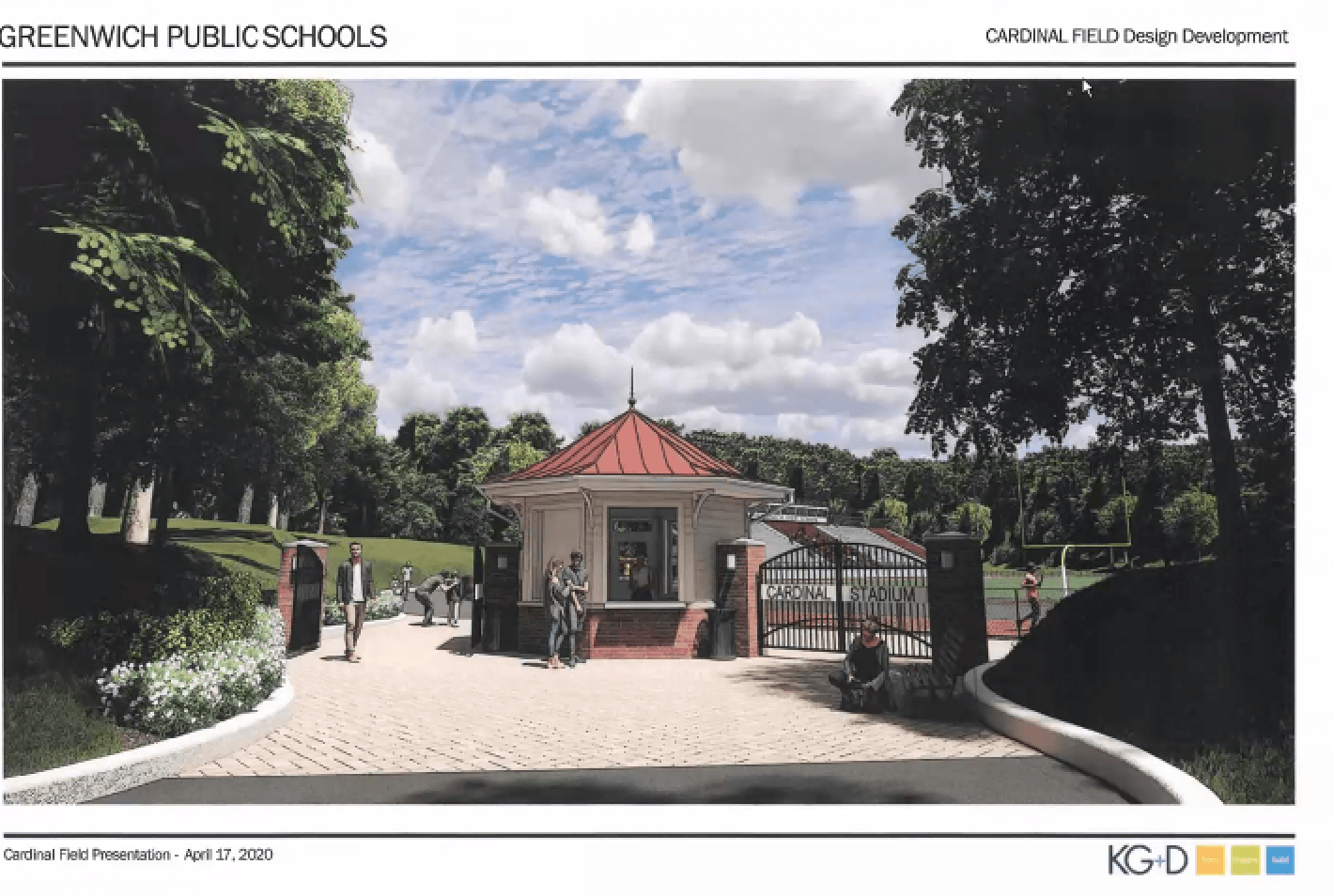
The high school is in a residential zone that is split between the RA1 and R20.
The rezone would make the entire property to R20, resulting in a possible additional 80,000 sq ft of FAR.

The high school is currently 72,461 square ft over what is permitted.
With the rezone, there is the potential of an additional 80,000 sq ft.
During discussion the commissioners asked attorney Heagney if there was a downside to the rezoning proposal.
“It’s a large building to begin with. This has the potential to make it larger, but only 16% larger than it is now,” he said, adding that any proposal that would require additional FAR would have to go through an arduous process that “touches every portion of town government,” and features the rigorous P&Z site plan/special permit process, as well as public hearings and the funding process.
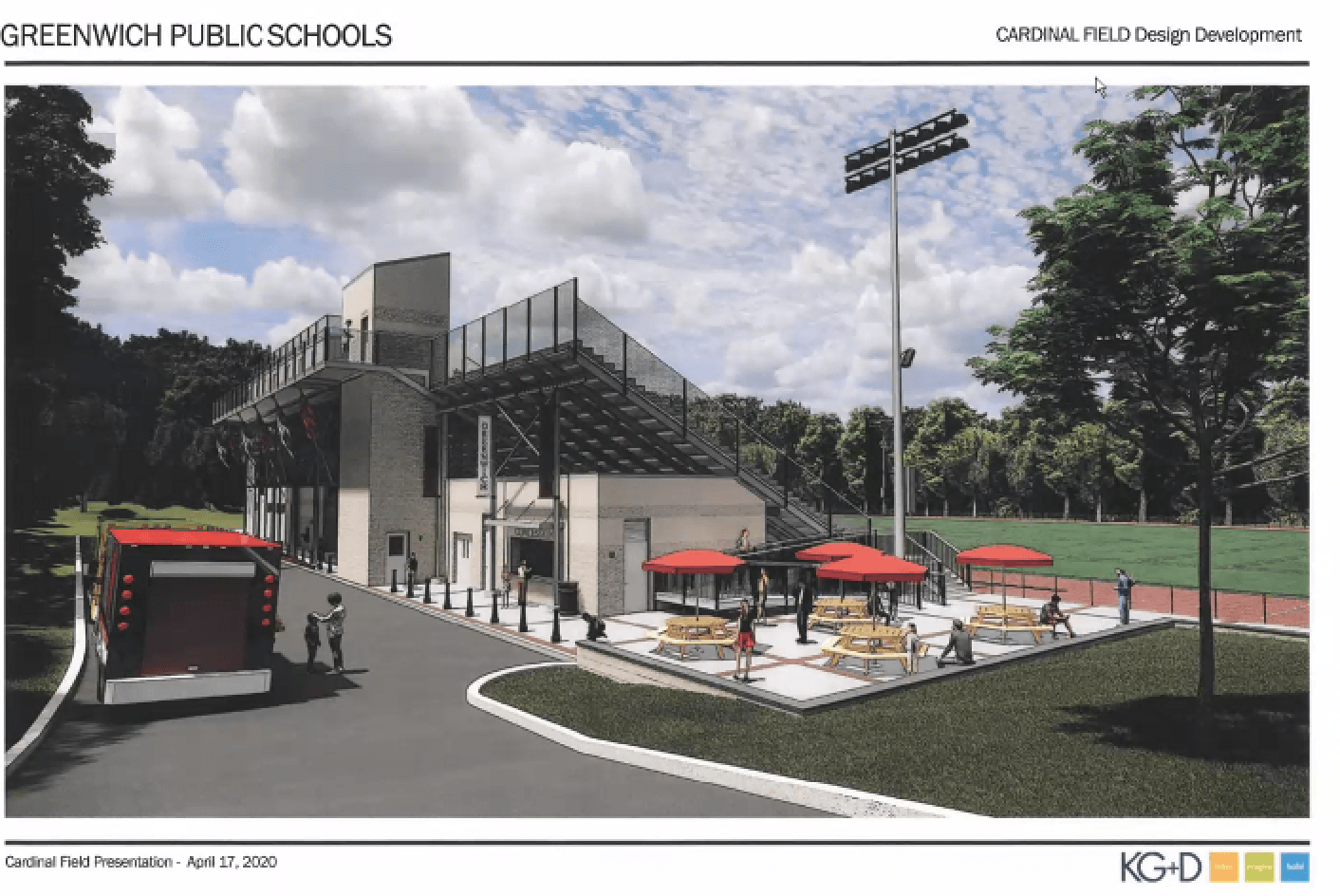
“Before anything is built, you would have a full vetting of what will be constructed on campus,” he said.
Without the re-zoning, any proposed project that increases FAR at all would require a variance.
“And to get a variance you have to prove there is a hardship. And to be honest I don’t think that’s any way to run a school,” said P&Z chair Margarita Alban, adding that a rezoning would make possible more long term planning, so that the high school doesn’t have to “go cap in hand (to ZBA) to demonstrate it has hardship.”
Alban said that every time a variance is sought the same “hardship” is offered, which is that Greenwich High School is the town’s one and only high school.
How did the high school get to in its current position of being 72,000 square feet over the FAR it is allowed?
Attorney Heagney said the high school has been “on the variance train” for quite some time, and FAR was added when the school added a house, science building and additional space for administration in the 90s. And then, of course, there was the Music Instructional Space & Auditorium, or “MISA,” which was recently completed.
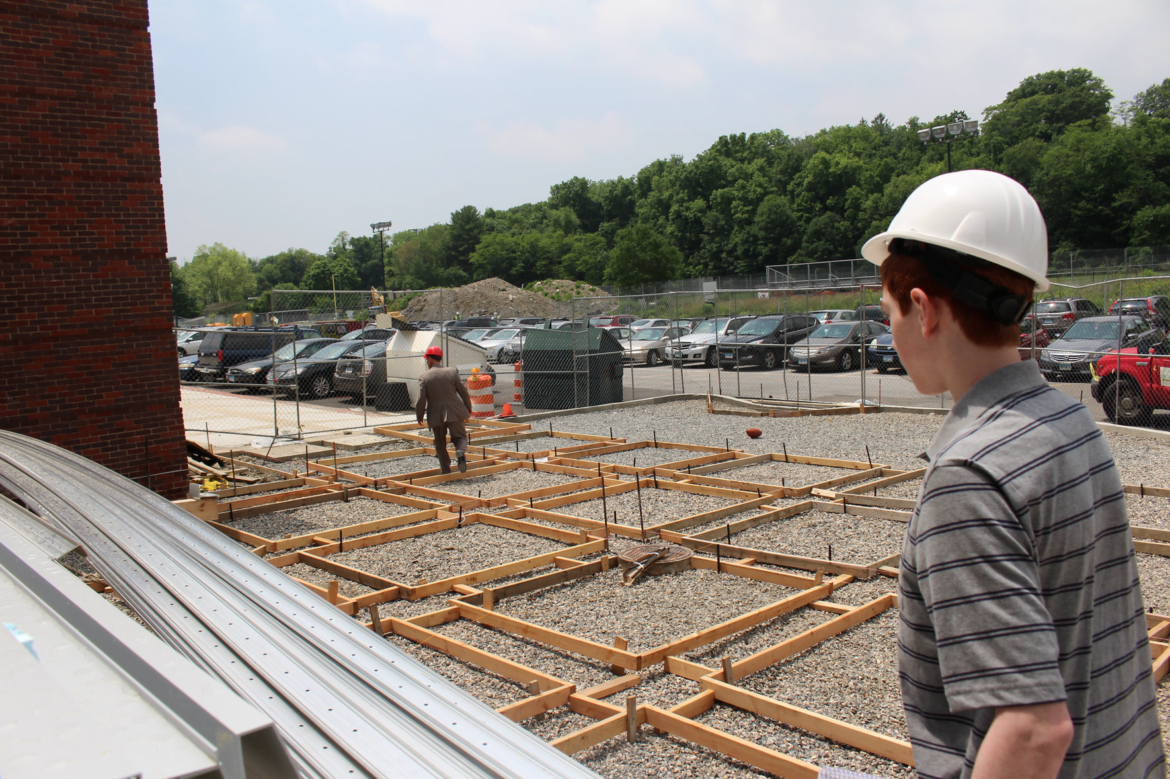
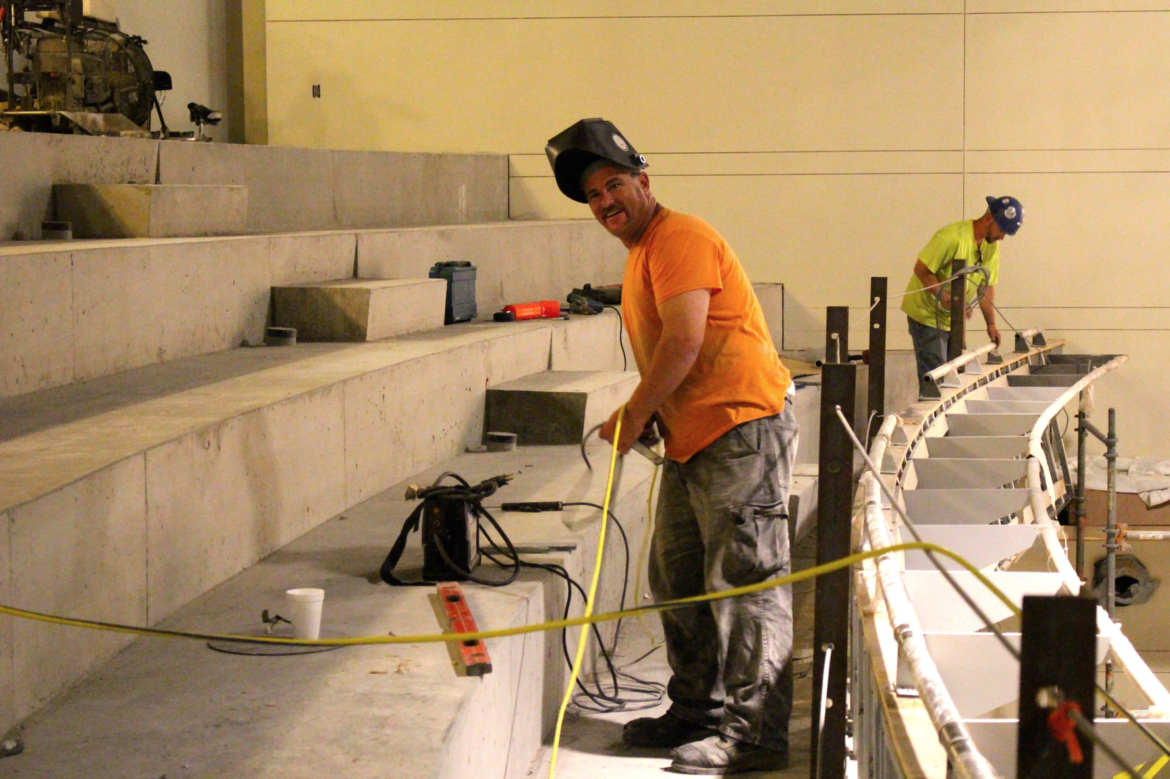
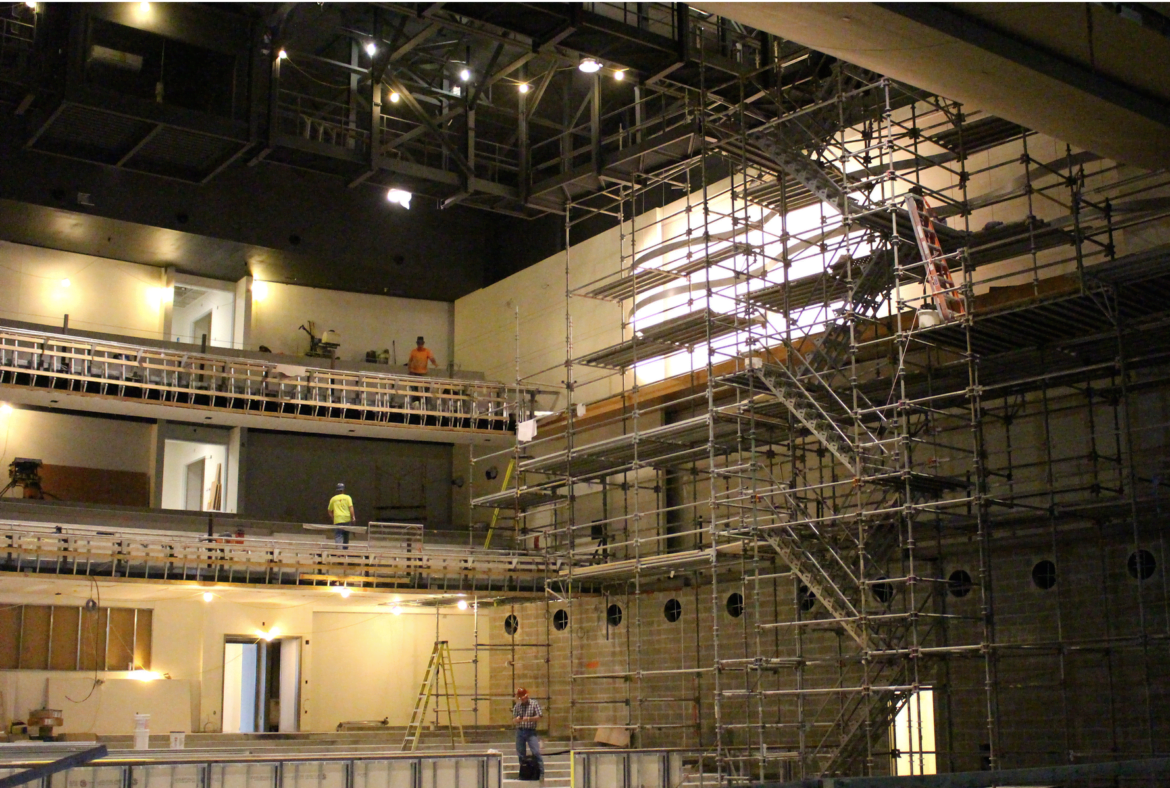
Heagney pointed out that the high school started out with an inadequate auditorium when it first opened in 1970.
And, he noted, none of the additions that required more FAR were about attracting additional students, but rather to better serve the existing population.
During public comment a few neighbors spoke.
Rich Stevenson of Old Church Road said he strongly opposed the application, noting that he had received a single page letter from the attorney referring to a rezoning for RA1 and R20, but that he didn’t understand what that meant.
He said when he inquired at town hall, he learned the change would allow an additional 79,000 sq ft, which he described as “a serious change.”
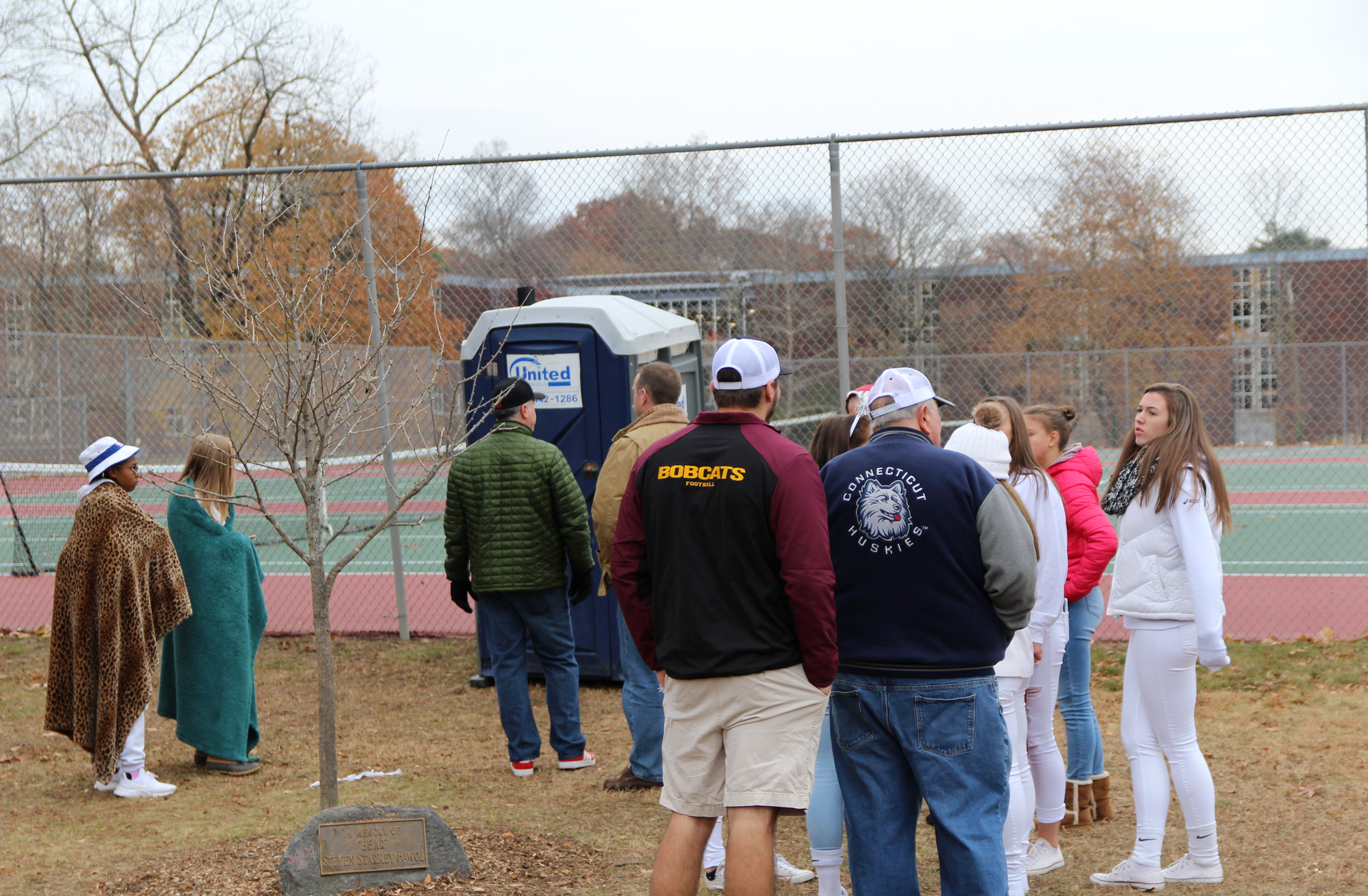
“That’s equivalent to 10 really big houses,” Stevenson said. “For those of us in close proximity to the property – and we’re all hugely in favor to a top notch high school – but allowing that type of build is too much on the space.”
Stevenson said a rezoning would impact traffic and property values and that, “At a minimum it warrants further discussion and debate.”
Ashley Cole of Hillside Rd said she was disappointed. “I implore you to deny the rezoning of GHS,” she said. “Variances are the currency of P&Z because it is a protection to us as abutters and stakeholders.”
“Variances are not the currency of P&Z,” Alban said. They’re issued by the Zoning Board of Appeals, and they’re only granted by hardship. If they rezone and they have a hardship, they would still go to ZBA if they need a variance.”
“By changing the zoning, you don’t have to get a variance,” Cole said. “I don’t think that’s just or ethical or right.”
“I’m trying to protect and preserve my neighborhood. We have traffic issues, water issues, and we’ve brought them up again and again. The neighbors have done their best to be responsible citizens but it feels people are not responsible to us. I’d like to fix these things before we go on. There is some responsibility to our neighborhood that I am not seeing happen.”
Ashley Cole, neighbor at Hillside Road
Ms. Alban again disagreed. “I see this as giving us greater control over what happens with a site plan. For example, what they do with the bleachers is in our camp. They could have gone to get a variance and said, ‘We have a variance, so now there is nothing you can do to approve the site plan.’ That’s how variances work, because it brings it into regulations, and we can’t say, ‘Now this is too much.’ It increases the control you have when they come in for a site plan and special permit request. Or they come back and say, ‘Fait accompli. We have a variance which you wouldn’t believe how many people do to us.”
Ms Cole said that when the high school got a variance for MISA, the neighbors were promised 120 trees and landscaping, as well as the promise of a traffic study, which didn’t happen until last year after neighbors complained in several public hearings. A committee was formed and met for many months.

Ms DeLuca said she was on that committee and the the work was valuable.
“As annoying as it was, I do think in the end the process worked, there was public involvement,” she said.
“I don’t think it’s solved yet,” she said, referring to the traffic and parking at GHS, adding, “Phase 2 (of the stadium project) includes the entrance point to East Putnam Ave. It’s important to have an additional entrance. That came out of that committee too. As arduous and lengthy as it was, it was good process.”
“Throughout our study and even after our study, nothing has been done. Nothing has changed,” Cole said.
“We got the traffic study done and it’s difficult one with school being closed,” DeLuca said.
BOE member Joe Kelly promised Ms Cole that a second egress road to East Putnam Ave via East Putnam Ave remains a priority.
“I will work with you going forward to work on that road. The stadium is a replacement. There’s a little difference in square footage. And the entry way is a safety adjustment to address the possibility of danger to our children because of school shootings,” Kelly continued. “We have to address that without worrying about the difference in FAR. …We’re not haphazardly looking at campus expansion just because we have the ability to do so.”
“I wish I could put promises in the bank,” Ms Cole said, adding, “Several people told me that it (second egress) wasn’t funded and said, ‘Good Luck. It’ll never happen.'”
Clare Kilgallen, who served on the New Lebanon School building committee said she was in favor of the rezoning.
“I can tell you that the MI process is extremely rigorous,” Kilgallen said. “At every stage there is meaningful opportunity to have questions answered and addressed. Putting this in R20 zone complies with the goals of POCD.”
Leslie Tarkington, who is a member of the Board of Estimate and Taxation spoke against the rezoning.
“I’m speaking as a resident of district 7,” she said. “I was not aware of this change of zoning. I’m concerned this is a precedent for institutional down zoning in a residential neighborhood.”
Ms Alban disagreed, saying it would not set a precedent because GHS is unique in that it is a split zone.
“Spot zoning is wildly illegal,” Alban said. “It doesn’t set a precedent unless someone is already next to the zone they want to switch to, or it’s a split zone.”
“We need to spend more time protecting our grand list in residential neighborhoods,” Tarkington replied. “We want quality of life and great institutions, but it’s also about preserving our character and residential neighborhoods.”
“Residential neighborhoods are what make Greenwich so special. This has not had sufficient exposure.”
Leslie Tarkington, resident district 7
“We support the new entry way. But with declining enrollment…” Tarkington continued.
“You’re saying you really hold the cards here unless you, as chair of Budget Committee on the BET – unless you approve it for GHS and are willing to fund it, we can rezone or anything, and it has no impact until you look at it and agree to monies for it?” Alban asked.
“We approve the funding for it. Not the character of the project,” Tarkington said.
“If you never leave the BET, you have complete control of what happens in this rezone,” Alban said. “If they don’t fund anything, they don’t build anything….If you think it’s not good for the community, it’s a dead stop.”
“You’re giving the finance board much too much credit,” Tarkington said. “We broadly support the cardinal stadium.”
In the end the commission acknowledged that neighbors felt thy hadn’t had enough time to review the proposal, and item was left open until the June 30 meeting.
See also:
P&Z, BOE Hash Out Plans for Cardinal Stadium and Egress to East Putnam Ave May 2020
P&Z Watch: Consider Second GHS Egress As Part of Cardinal Stadium Phase 1 April 2020